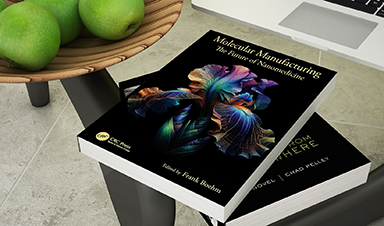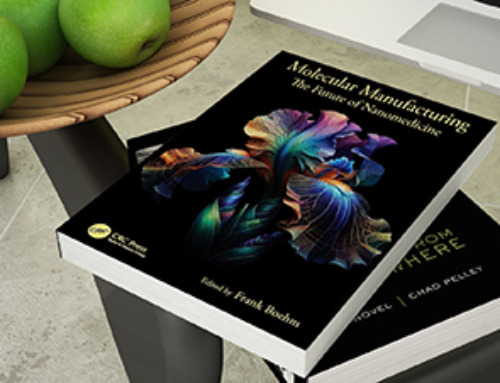News flash: The Digital Age is over.
As we transition from the era of digital domination, where technology led the march of progress, we are entering a fundamentally different epoch. This new era—the Cognitive Age—pivots on a central, transformative theme: The essence of being human—our thoughts, our consciousness, our very cognitive processes—are becoming the forefront of innovation and technological advancement.
This shift signals a move beyond the conventional ideas where technology and digitalization were the harbingers of change. In the digital era, we marveled at the prowess of binary code and silicon chips, which transformed our physical world in unprecedented ways. The narrative was primarily about machines and systems, about algorithms and automations. The value of these advances is still critical and fundamental to our path forward. However, as groundbreaking as these developments were, they set the stage for an even more revolutionary shift.
Enter the Cognitive Age, where the focus transcends technological tools and zeros in on the human mind itself, in partnership with the very technologies that were once the main act. This age is not defined merely by the tools we create but by how these tools intertwine with, extend, and enhance our cognitive capacities.
At the core of this transformation are technologies like generative pre-trained transformers and advanced large language models (LLMs). While these tools are technological marvels, what sets them apart is their ability to interact with, and augment human thought processes. Unlike the earlier eras of technological advancement, where human interaction with technology was largely unidirectional, we are now looking at a future where the interaction is reciprocal.
This shift brings with it a renewed emphasis on the uniquely human aspects of creativity, emotion, and ethical decision-making. As AI and LLMs grow more sophisticated, they don’t just process data; they start to understand context, emotion, and subtlety in a way that resembles human thought. This capability does not replace human cognition but complements it, leading to a co-evolution of human and machine intelligence.
In fact, this unique synergy is coming to life with the recent launch of the Humane AI Pin. This $699 device, comprising a square unit and a magnetic battery pack, simplifies interaction with technology. Controlled via voice, camera, gestures, and a small projector, it weighs just 54 grams in total. Notably, it doesn’t continuously record or listen passively, ensuring privacy and user control.
At the heart of the AI Pin is its connection to AI models, especially ChatGPT, facilitated by the Cosmos operating system. This system bypasses traditional app usage, routing user queries directly to relevant tools. The AI Pin’s functionality extends beyond mere gadgetry; it’s a wearable, AI-powered assistant capable of voice messaging, summarizing emails, analyzing food for nutritional information, and providing real-time translations. Future updates promise navigation and shopping features, with an open invitation for developers to further expand its capabilities.
This co-evolution has significant implications for innovation. The Cognitive Age pushes us to reimagine the nature of problem-solving, creativity, and ideation. It challenges us to rethink the dynamics of how we interact with technology, shifting from a mindset of creating tools to facilitate human tasks to fostering an environment where human and machine intelligence co-create, co-innovate, and collectively transcend the limitations of each.
Moreover, this shift underscores a fundamental truth: In the Cognitive Age, humanity isn’t just the beneficiary of innovation but an integral component of it. The technology doesn’t just serve us; it engages with us, learns from us, and in turn, we adapt and learn from it. This symbiosis is reshaping not just our tools and processes but our very conception of what it means to be human in a technologically advanced world.
It’s in this confluence of human and artificial cognition that the true transformative power of the Cognitive Age lies. It’s an era where our tools don’t just do more for us; they think with us, and in doing so, they elevate our capacity for thought, creativity, and innovation. As these cognitive technologies become more ingrained in our daily lives, they not only change the way we work and play but also the way we perceive the world and ourselves within it.
The Cognitive Age heralds a celebration of humanity, not through the lens of what technology can do for us but through the fascinating perspective of what we can achieve together with technology. This isn’t just a technological revolution; it’s a human one. As we stand on the threshold of this new age, we recognize that the most extraordinary aspect of this era is not the technology itself, but the unprecedented partnership between human and machine intelligence, a partnership that promises to redefine our future in ways we are only beginning to imagine.
News
Two New Books From Frank Boehm, NA Founder – To be Released Dec. 2025
Molecular Manufacturing: The Future of Nanomedicine This book explores the revolutionary potential of atomically precise manufacturing technologies to transform global healthcare, as well as practically every other sector across society. This forward-thinking volume examines [...]
What could the future of nanoscience look like?
Society has a lot to thank for nanoscience. From improved health monitoring to reducing the size of electronics, scientists’ ability to delve deeper and better understand chemistry at the nanoscale has opened up numerous [...]
Scientists Melt Cancer’s Hidden “Power Hubs” and Stop Tumor Growth
Researchers discovered that in a rare kidney cancer, RNA builds droplet-like hubs that act as growth control centers inside tumor cells. By engineering a molecular switch to dissolve these hubs, they were able to halt cancer [...]
Platelet-inspired nanoparticles could improve treatment of inflammatory diseases
Scientists have developed platelet-inspired nanoparticles that deliver anti-inflammatory drugs directly to brain-computer interface implants, doubling their effectiveness. Scientists have found a way to improve the performance of brain-computer interface (BCI) electrodes by delivering anti-inflammatory drugs directly [...]
After 150 years, a new chapter in cancer therapy is finally beginning
For decades, researchers have been looking for ways to destroy cancer cells in a targeted manner without further weakening the body. But for many patients whose immune system is severely impaired by chemotherapy or radiation, [...]
Older chemical libraries show promise for fighting resistant strains of COVID-19 virus
SARS‑CoV‑2, the virus that causes COVID-19, continues to mutate, with some newer strains becoming less responsive to current antiviral treatments like Paxlovid. Now, University of California San Diego scientists and an international team of [...]
Lower doses of immunotherapy for skin cancer give better results, study suggests
According to a new study, lower doses of approved immunotherapy for malignant melanoma can give better results against tumors, while reducing side effects. This is reported by researchers at Karolinska Institutet in the Journal of the National [...]
Researchers highlight five pathways through which microplastics can harm the brain
Microplastics could be fueling neurodegenerative diseases like Alzheimer's and Parkinson's, with a new study highlighting five ways microplastics can trigger inflammation and damage in the brain. More than 57 million people live with dementia, [...]
Tiny Metal Nanodots Obliterate Cancer Cells While Largely Sparing Healthy Tissue
Scientists have developed tiny metal-oxide particles that push cancer cells past their stress limits while sparing healthy tissue. An international team led by RMIT University has developed tiny particles called nanodots, crafted from a metallic compound, [...]
Gold Nanoclusters Could Supercharge Quantum Computers
Researchers found that gold “super atoms” can behave like the atoms in top-tier quantum systems—only far easier to scale. These tiny clusters can be customized at the molecular level, offering a powerful, tunable foundation [...]
A single shot of HPV vaccine may be enough to fight cervical cancer, study finds
WASHINGTON -- A single HPV vaccination appears just as effective as two doses at preventing the viral infection that causes cervical cancer, researchers reported Wednesday. HPV, or human papillomavirus, is very common and spread [...]
New technique overcomes technological barrier in 3D brain imaging
Scientists at the Swiss Light Source SLS have succeeded in mapping a piece of brain tissue in 3D at unprecedented resolution using X-rays, non-destructively. The breakthrough overcomes a long-standing technological barrier that had limited [...]
Scientists Uncover Hidden Blood Pattern in Long COVID
Researchers found persistent microclot and NET structures in Long COVID blood that may explain long-lasting symptoms. Researchers examining Long COVID have identified a structural connection between circulating microclots and neutrophil extracellular traps (NETs). The [...]
This Cellular Trick Helps Cancer Spread, but Could Also Stop It
Groups of normal cbiells can sense far into their surroundings, helping explain cancer cell migration. Understanding this ability could lead to new ways to limit tumor spread. The tale of the princess and the [...]
New mRNA therapy targets drug-resistant pneumonia
Bacteria that multiply on surfaces are a major headache in health care when they gain a foothold on, for example, implants or in catheters. Researchers at Chalmers University of Technology in Sweden have found [...]
Current Heart Health Guidelines Are Failing To Catch a Deadly Genetic Killer
New research reveals that standard screening misses most people with a common inherited cholesterol disorder. A Mayo Clinic study reports that current genetic screening guidelines overlook most people who have familial hypercholesterolemia, an inherited disorder that [...]





















